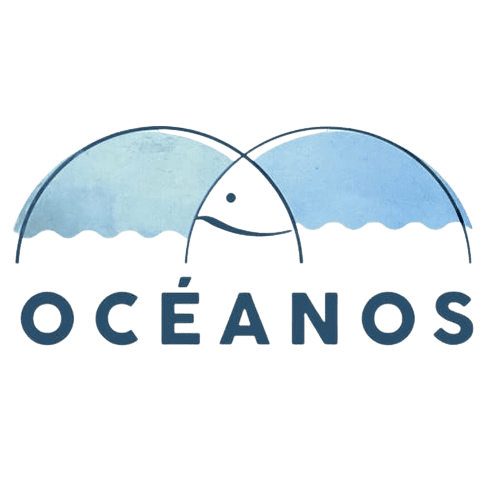Beagle group
Ecology
The flow of energy and the cycling of nutrients characterise the different ecosystems and these aspects constitute the object of study of Ecology.
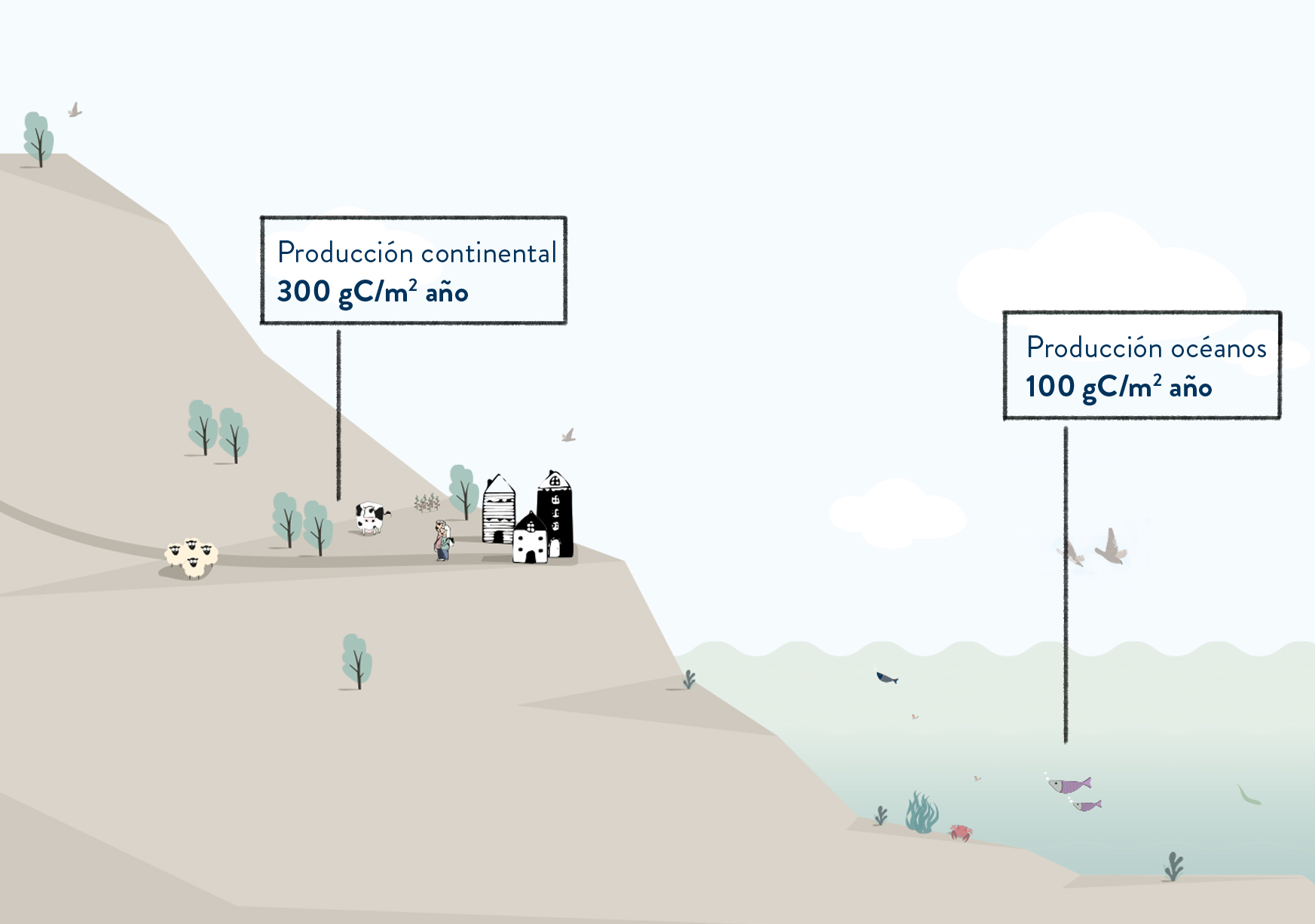
The drawing shows the production difference between land and oceans. What do you think causes this difference?
In the sections below, you will find information that will enable you to answer this question.
ECOSYSTEMS
DIFFERENCE BETWEEN LAND AND OCEAN ECOSYSTEMS
The Sun is the basis of life through its capacity for plant synthesis (photosynthesis).
The energy from the Sun is used by plants in PRIMARY PRODUCTION and it passes through them to the other organisms, which use the energy from the chemical bonds to synthesise organic matter.
Ecosystems cannot survive without this supply of energy.
The use of sunlight and nutrients for primary production is not the same on Earth as it is in the oceans.
El aprovechamiento de la luz del sol y de los nutrientes para la producción primaria es diferente en la Tierra y en el Océano.
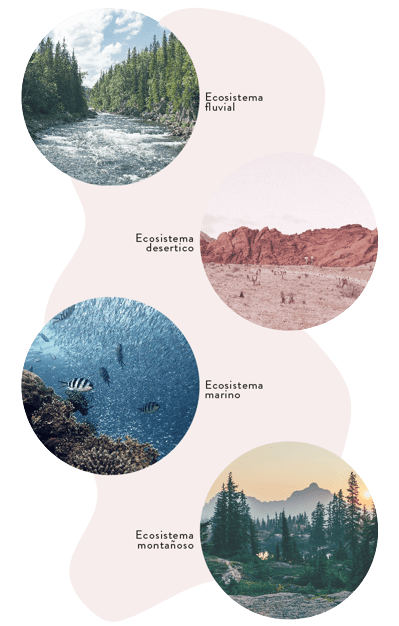
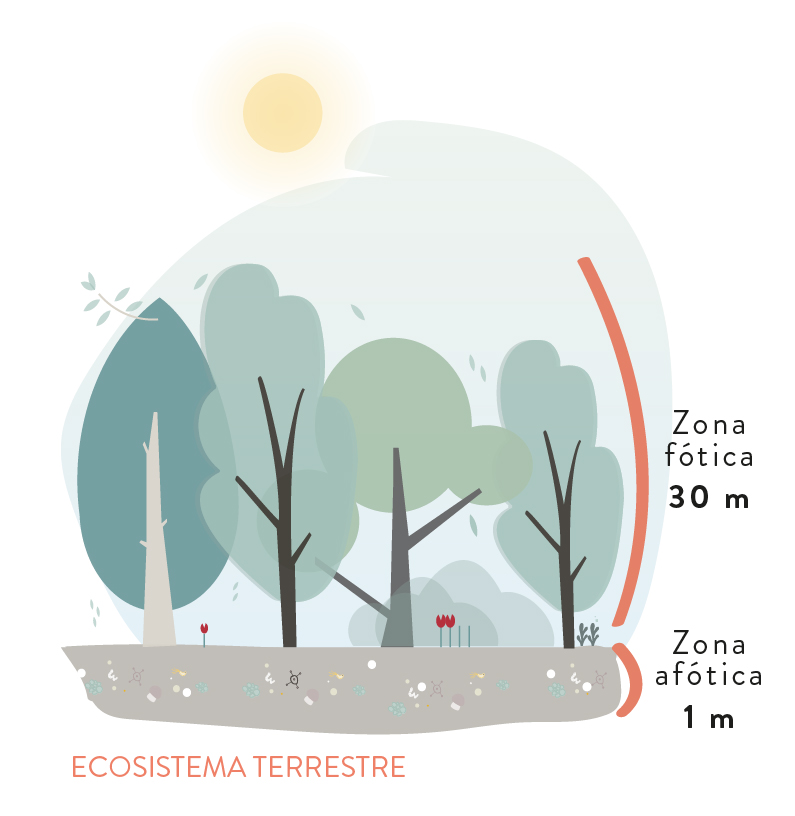
Ecosystems
In terrestrial ecosystems, the light penetrates to the ground. In forests, leaves are in the path of the Sun’s rays and partly absorb and partly reflect the light. However, the light reaches the soil even in the densest forests.
Although some trees can grow as tall as 110 m, the maximum height in forests is usually 30 m.
Where does primary production occur in the terrestrial ecosystem?
In the ocean, the most important primary producers are phytoplankton―microscopic organisms that live suspended in the water. Light penetrates less in water than in air, which is why the light needed to sustain life disappears as the depth increases.
Phytoplankton must be in the top layers to capture the light, which limits marine production to a thin layer of 50–100 m compared with the average 4.000 m depth of seas.
Nutrients like phosphorous and nitrogen are also needed. The availability of these nutrients restricts the primary production of phytoplankton in this layer lit by the Sun.
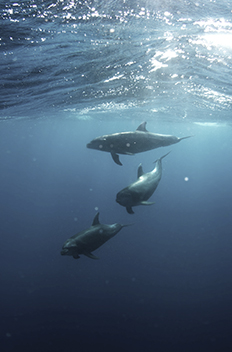
WITH THIS INFORMATION COULD YOU SAY…
Where does primary production occur in the ocean ecosystem?
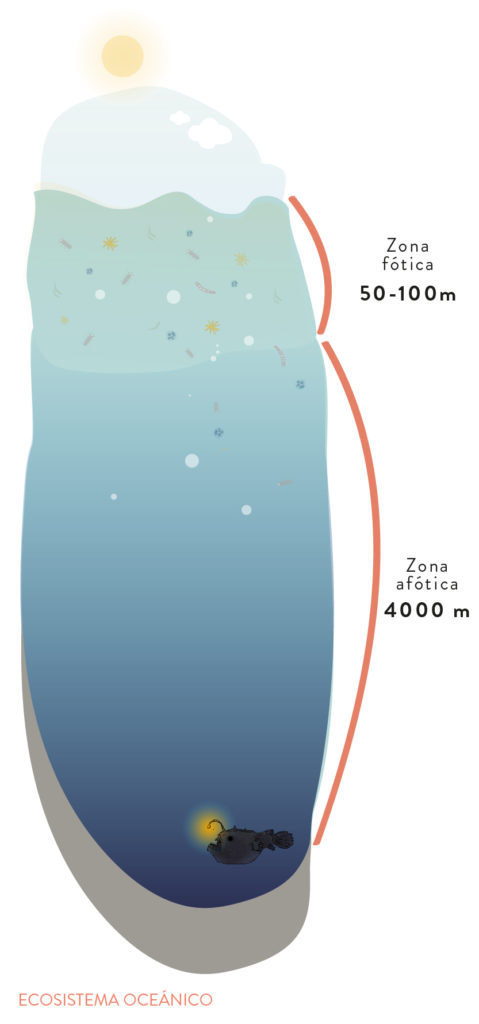
Nutrient transport in terrestrial, river and ocean environments.
In terrestrial ecosystems, both dead organisms and waste and excrement are recycled in the soil layer thanks to decomposers. This layer is a maximum of 1 m thick and these materials return rapidly to the lifecycle through the roots of plants. In oceans, organic matter accumulates on the sea floor and so the nutrients are at a depth of around 4,000 m. That is why a physical mechanism is needed to take the nutrients to the 50–100-m water layer lit by the Sun.

In the river ecosystem the flow is continuous so that decomposition of dead organisms, debris and excreta occurs as matter is carried downstream. A continuous supply of organic matter is needed for rivers to have sufficient nutrients for the organisms that inhabit them.
ENERGY FROM THE SUN
Visible energy from the Sun for photosynthesis (it transforms solar energy into chemical energy) enables plants to synthesise organic matter. This PRIMARY PRODUCTION process is highly effective as it uses 5% of the radiation that reaches the Earth.
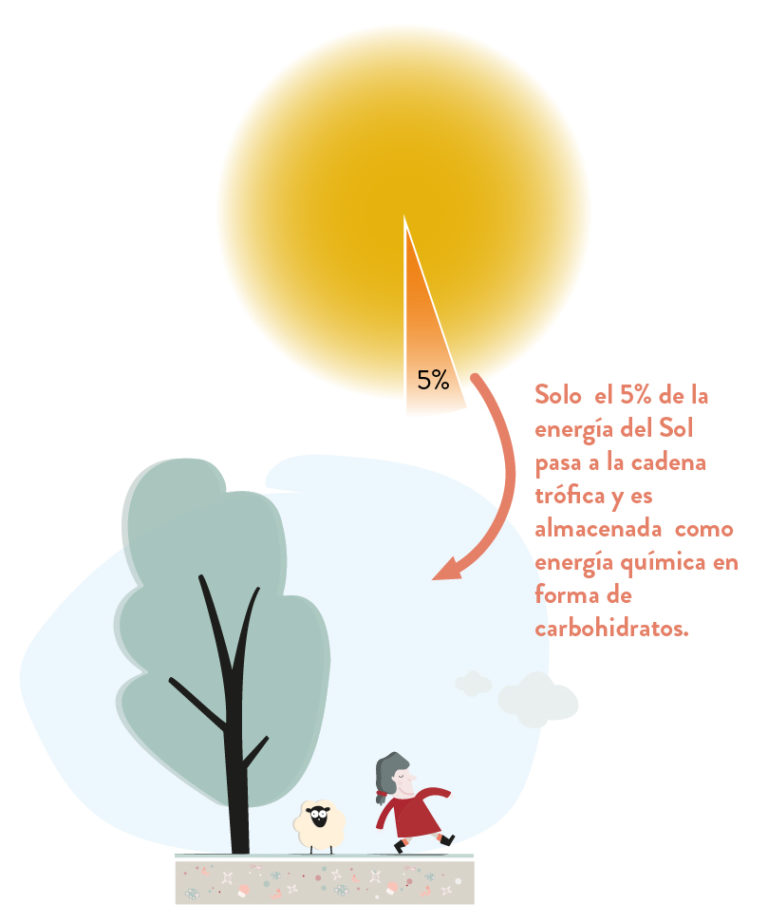
SUNLIGHT
How much light energy from the Sun does the food chain use?
White light from the Sun comprises the rainbow colours and we can separate it with a prism.
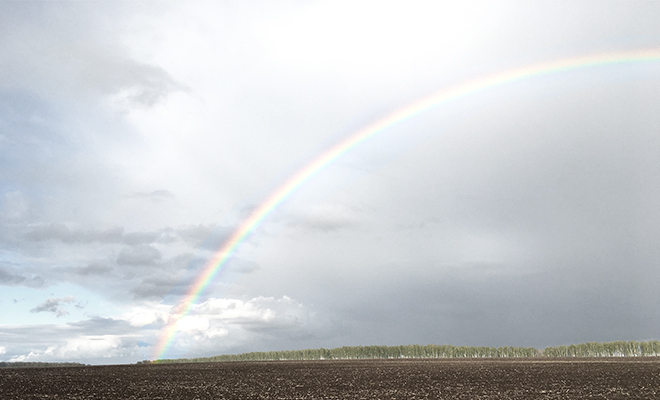
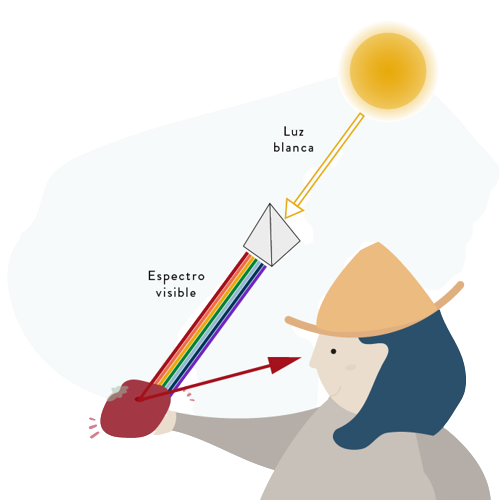
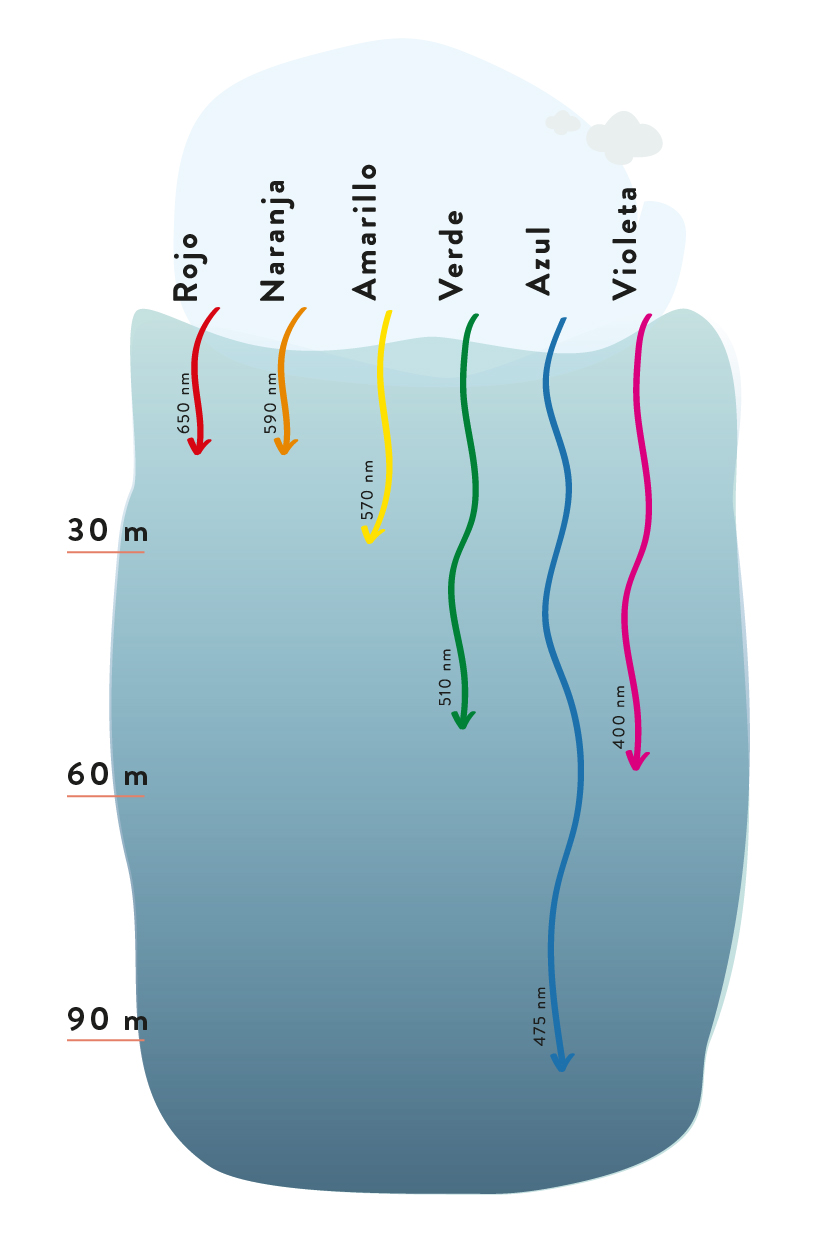
La luz del sol
Light behaves differently in the water than it does in the air. Seawater rapidly absorbs the red, orange and yellow in white light and so only some blue, green and violet reach a depth of over 40 m.
The red and orange components of solar light are absorbed in the first 15 m of the ocean and almost all the other colours are absorbed in the following 40 m. The wave length is measured in nanometres (nm).
COME TO YOUR OWN CONCLUSIONS
WHAT COLOUR DOES A RED FISH LOOK LIKE AT A DEPTH OF 90 M?
As phytoplankton depends on light for photosynthesis, it is only present in the highest ocean layers, which also affects the distribution of other organisms.
Photosynthesis only uses radiation from a part of the solar energy spectrum, specifically 400–700 nm (visible spectrum), which represents 47% of total energy.
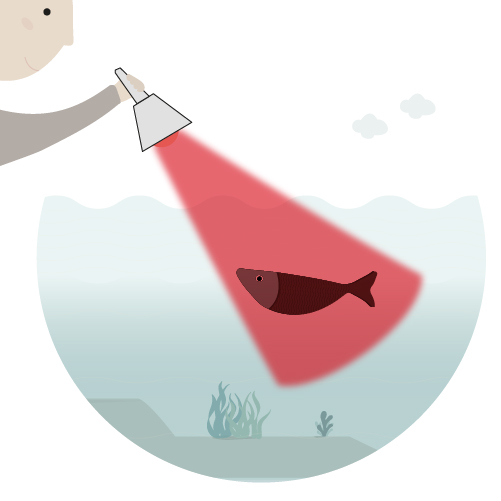
WITH ALL OF THIS, COULD YOU SAY…
Where does primary production occur in the ocean ecosystem…?
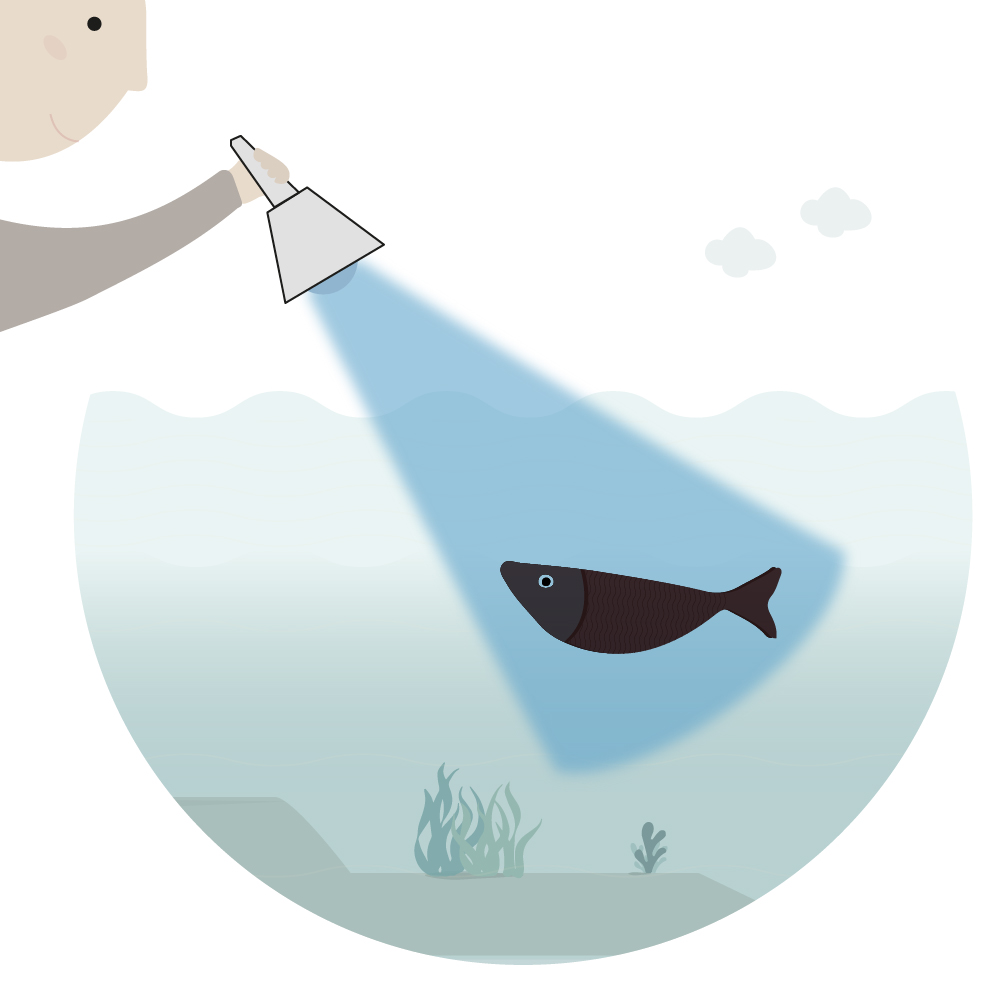
LABORATORY EXPERIMENTS
Demonstration of how carotene in carrots and tomatoes and chlorophyll in spinach absorb different light colours
Photosynthesis only uses radiation from a part of the solar energy spectrum, specifically 400–700 nm (visible spectrum), which represents 47% of total energy.
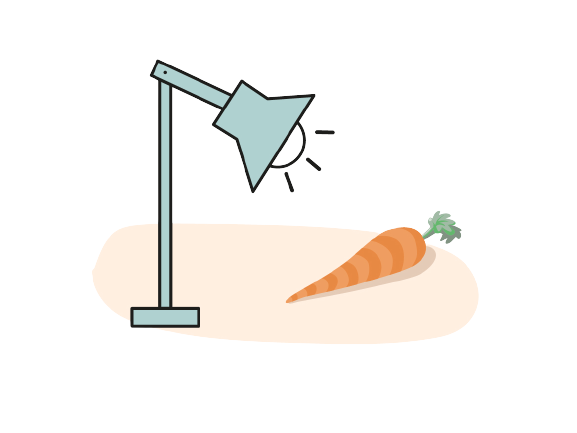
NUTRIENT CYCLE
These are the agents involved in the nutrient cycle:
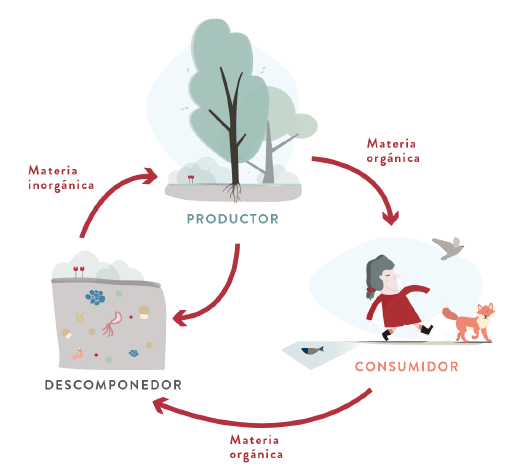
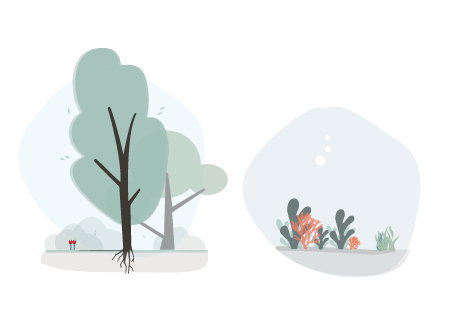
PRODUCER
Plants and phytoplankton
They produce organic matter from inorganic matter (water, mineral salts and carbon dioxide) and energy from the Sun through the photosynthesis process.

CONSUMER
Animals
They eat plants and animals and transform organic matter into their own organic matter.
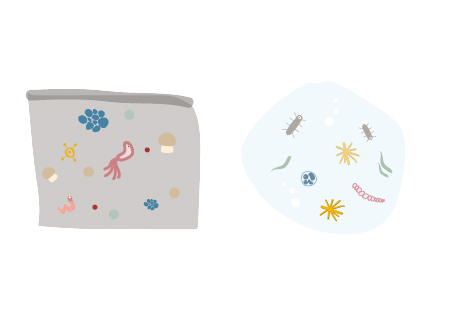
DECOMPOSER
Bacteria and fungi
They transform organic matter, from waste and from living creatures and also from dead organisms (animals and plants), into inorganic matter that can be used by plants and other autotrophic organisms.
AND IN THE OCEANS?
THE CYCLE OF OCEAN MATTER
Ocean matter benefits from the upwelling of nutrients caused by the action of the wind and currents.
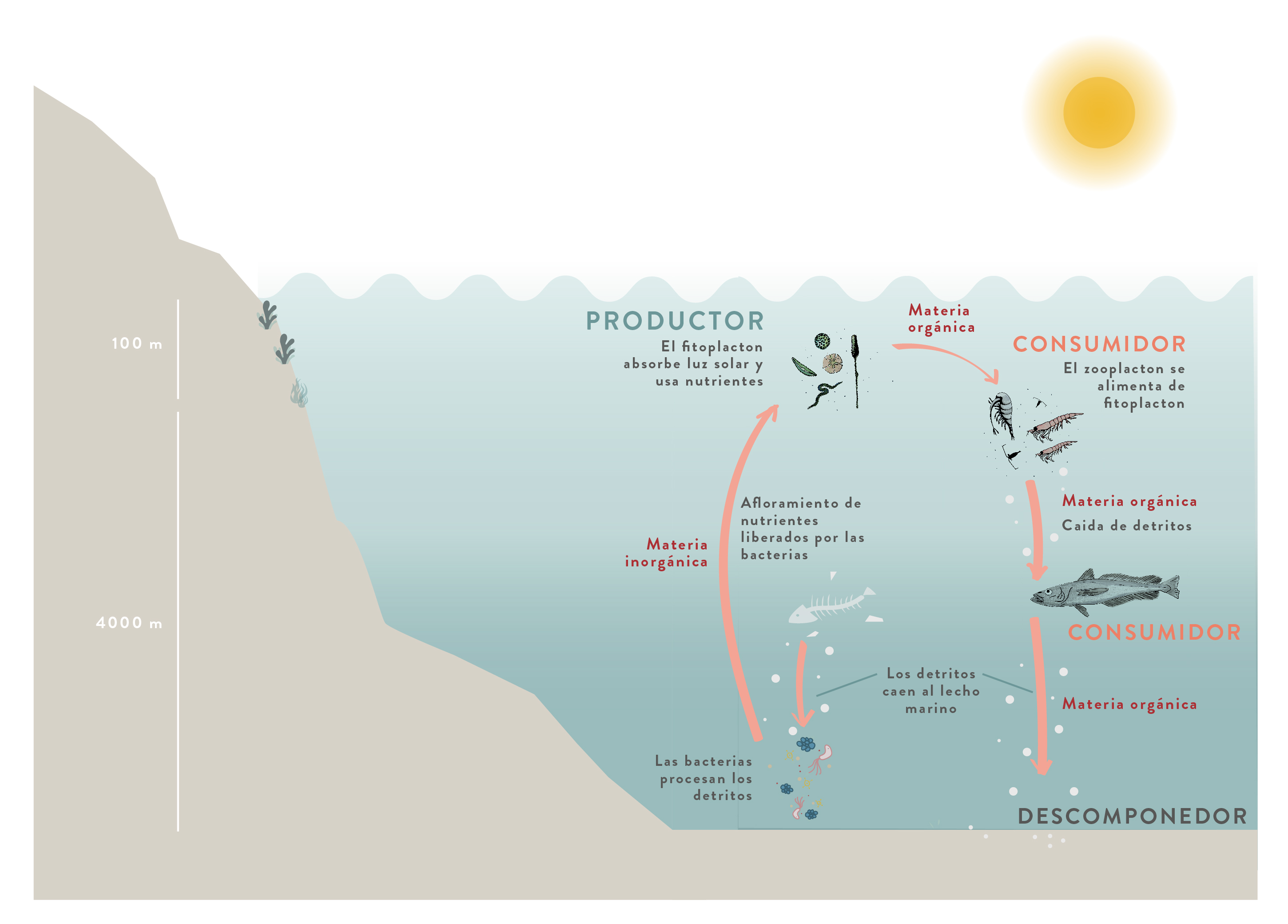
AND FOR THE ESSENTIAL ELEMENTS OF LIFE?
NITROGEN CYCLE
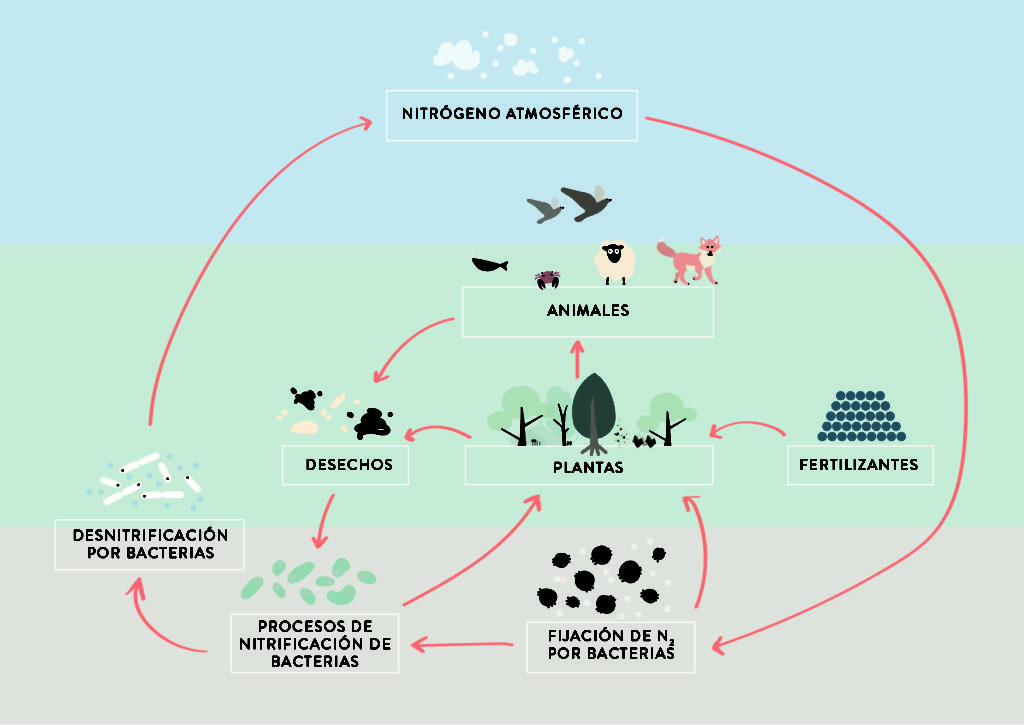
CARBON CYCLE
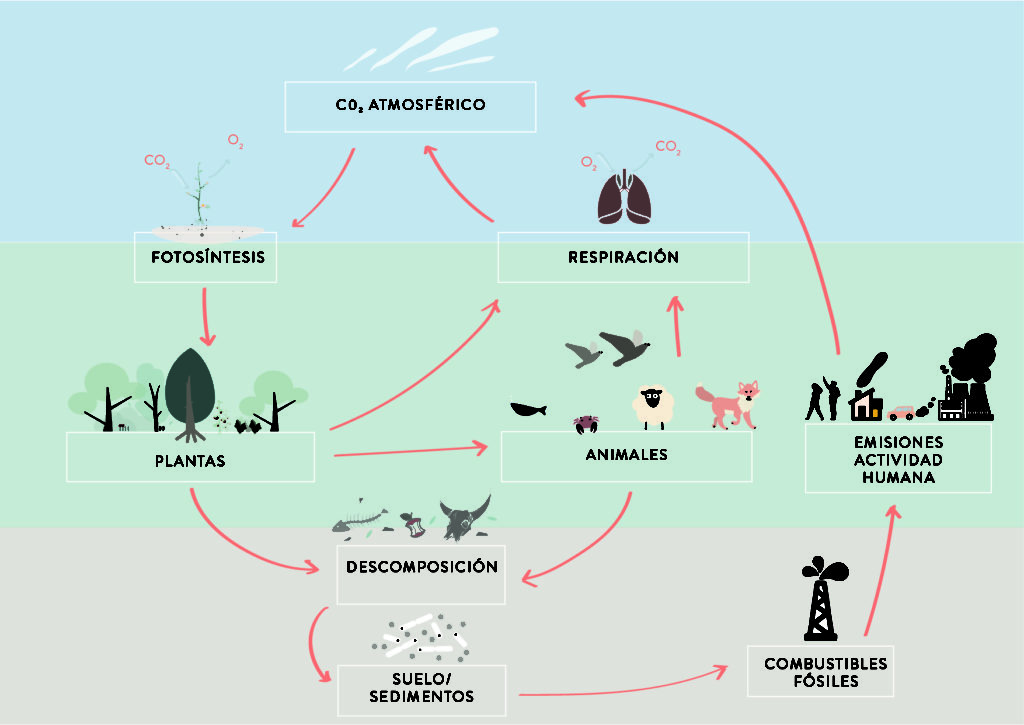
PHOSPHOROUS CYCLE

LIFE IN ECOSYSTEMS
Life in ecosystems, both on land and at sea, is sustained by two processes:
- FLOW OF ENERGY
- MATERIAL OR NUTRIENT CYCLE
A flow that begins with high-quality light energy from the Sun, stored in the form of biomass (gC/m2). Part of this energy transfers between living beings that are close to or on the Earth’s surface. Another part finally returns to the atmosphere as thermal energy. A cycle of materials or nutrients that all organisms need to live, grow and reproduce. The role played by DECOMPOSERS to close and maintain this nutrient cycle is especially noteworthy. High-quality light energy; Thermal energy; Decomposers
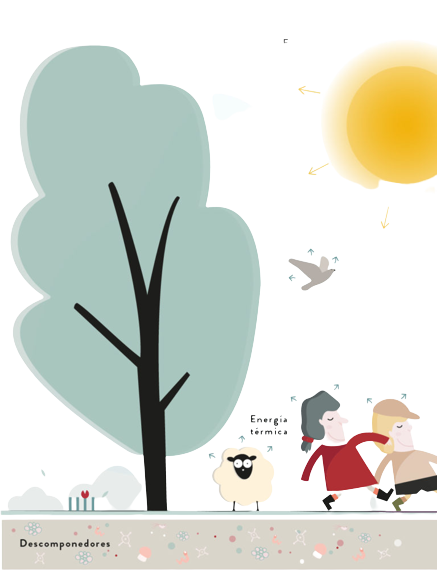
Plants transform the Sun’s radiant energy into chemical energy through photosynthesis, and part of this energy is stored as organic matter. This organic matter is the biomass (gC/m2). BIOMASS is organic matter of plant or animal origin, including organic debris and waste, that can be used as energy.
In the terrestrial environment
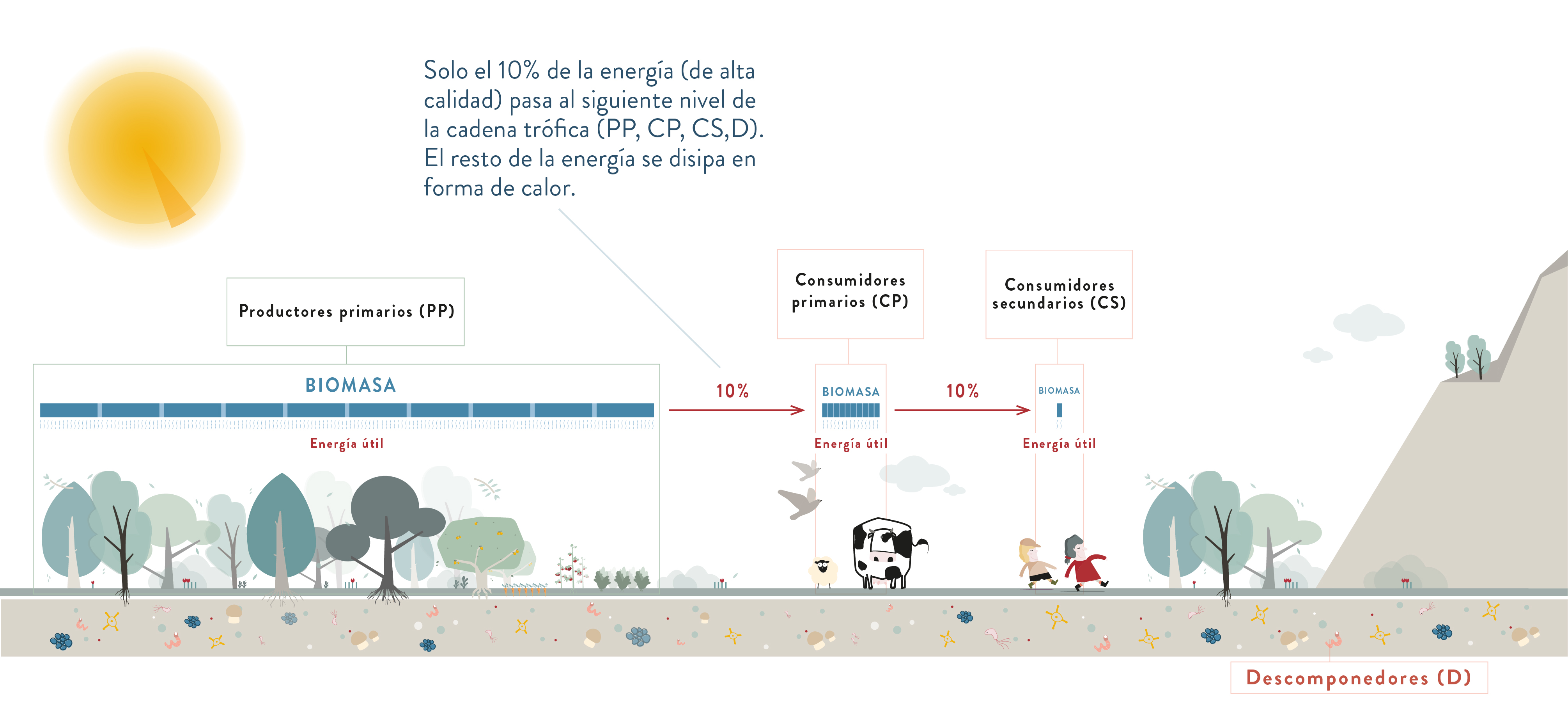
Average primary production of continental biomass is estimated at 300 gC/m2 year
In the aquatic environment
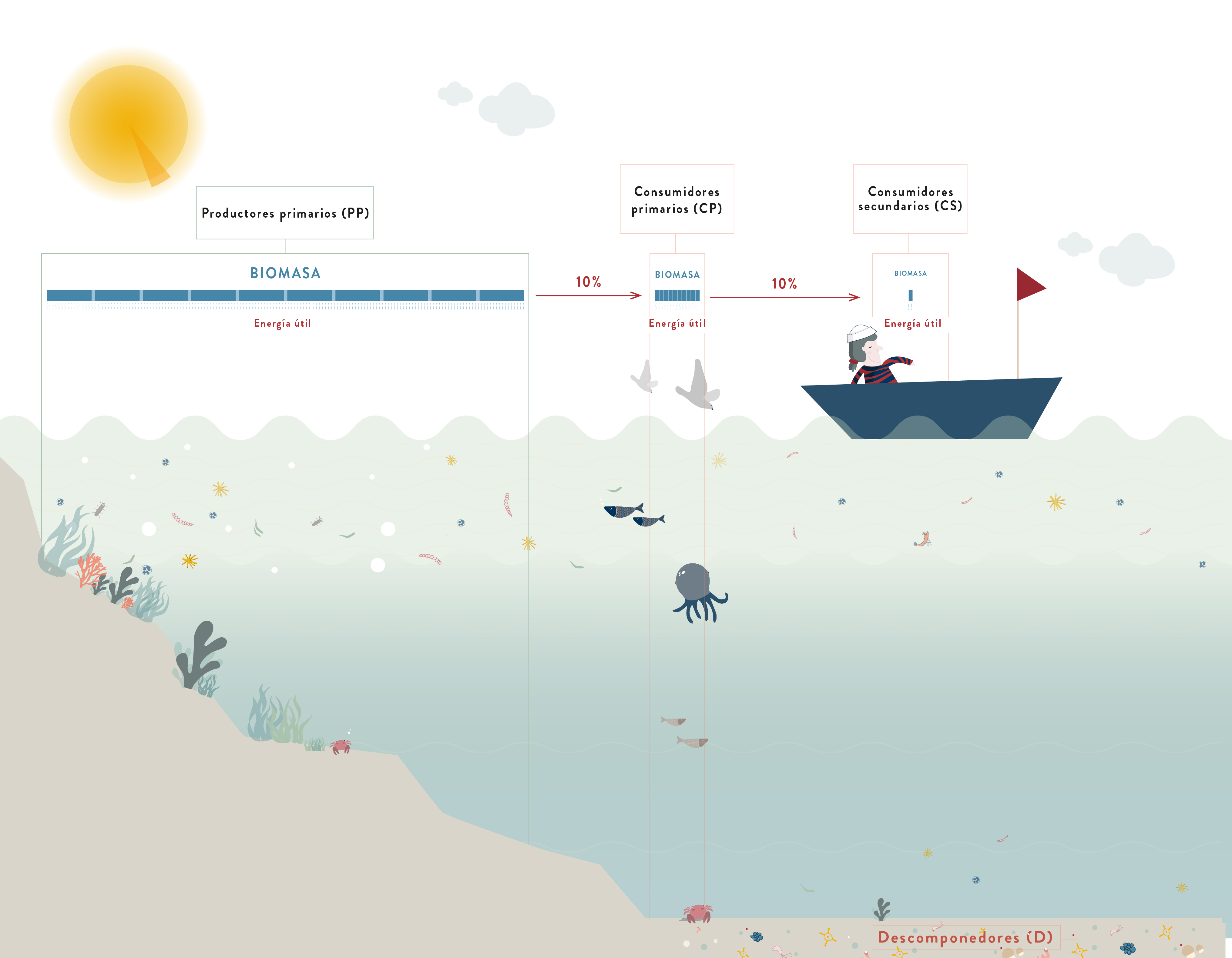
Average primary production of ocean biomass is estimated at 100 gC/m2 year.
